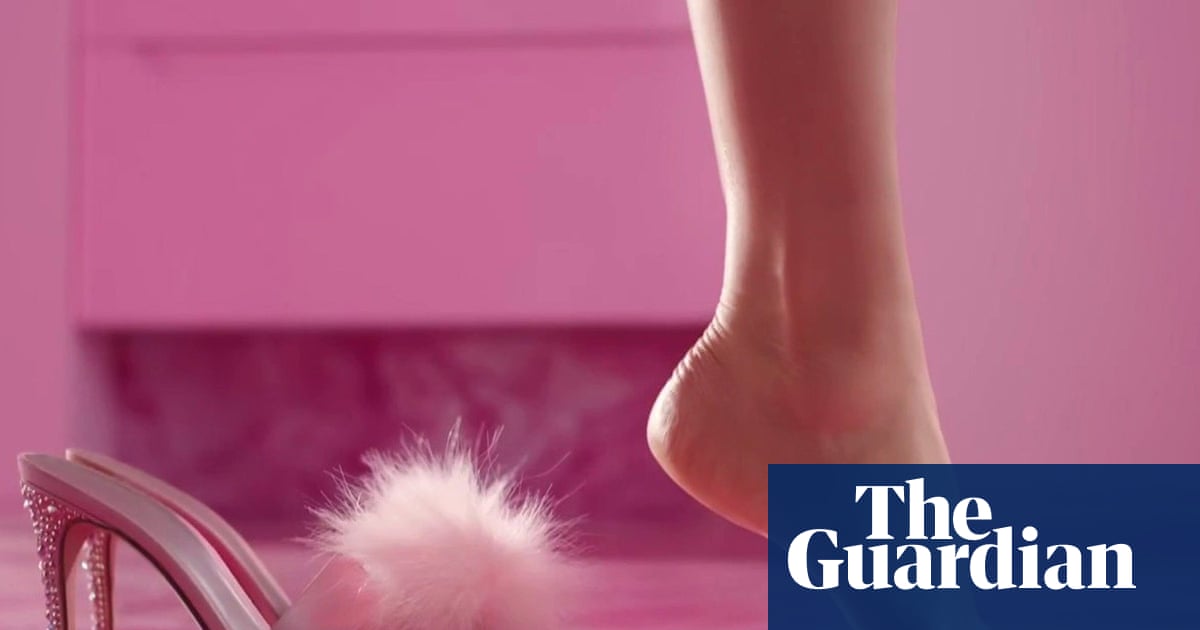She walked into the world on high-heeled mules, but as Barbie’s many careers gathered pace, her feet became more planted on the ground, researchers say.
A rare analysis of nearly 3,000 Barbies released over 65 years found that high-heeled incarnations gradually made way for flat-shoed forms, as workplace rules relaxed and career doors opened for the PVC doll.
The steady embrace of sensible flats coincided with Barbie’s laudable engagement with professional employment, the study found, leading its authors to conclude that “Barbieland has a dynamic environment with evolving employment patterns and social policies”.
The work, led by podiatrists in Australia and the UK, was spurred by a scene in Greta Gerwig’s2023 moviein which Margot Robbie’s Barbie suffers an existential crisis, and an onslaught of screams and retching, when her tiptoed feet suddenly become flat.
Prof Cylie Williams, a podiatrist at Monash University in Melbourne, said the scene prompted a flurry of Saturday night texts with fellow foot specialists. “When we were kids, Barbie only wore high heels,” she said. “Did Barbie really get flat feet? Did the actual toy get flat feet?”
And so the investigation began. Armed with agoniometermeasuring device, back catalogues of Mattel dolls and access to a personal collection of hundreds of dolls, Williams and her colleagues checked the foot angles of 2,750 Barbies released from 1959 to last June.
For the first 30 years, when Barbie launched as a fashion model, put in the hard hours to pass astronaut selection – and simultaneously found her calling in an ice-cream parlour – the doll consistently left the factory on tip toes, with feet at a 40-degree angle to the ground.
But from 1990, flat-footed models arrived. As Barbie bolstered her CV by taking orders at McDonald’s, hunting fossils as a paleontologist, developing video games and flogging presumably overpriced cheese at a farmers’ market, she increasingly favoured functional flats.
By mid-2024, according to the study in the journalPlos One, 60% of new Barbies had their feet firmly on the ground.
According to Williams, the trend reflected changes in workplace norms and legislation.
“So much has changed over the past 30 or so years. There were jobs, like air hostesses and banking staff, wherewomen had to wear high heelsas part of the uniform,” she said.
Before the Women’s Business Ownership Act of 1988, women in the US could not secure a business loan without a man’s co-signature.
Asked if there were lessons to learn, Williams, who had worn high heels all day before her interview with the Guardian, said health experts should stop the “doom and gloom” messages about high heels and the harm they may inflict.
Instead, they should trust that women, like Barbie, would pick footwear suitable for the tasks ahead.
“In a world where Barbie could be anything, her ankles still couldn’t bend for 30 years,” said Dao Tunprasert, principal lecturer in podiatry at the University of Brighton.
“This is such an oddly fitting metaphor for the rigid expectations placed on women, including in workplace dress codes that demanded heels.
“This study cleverly highlights how even fashion dolls reflect shifting societal norms. Most importantly, it reminds us that women should have the freedom to choose their footwear, heels or not, without judgment particularly from health professionals.
“Kudos to the researchers for delivering such an important message in such a fabulous way.”
A Mattel spokesperson said: “After more than 65 years of innovation, the past decade has marked the Barbie brand’s most ambitious product design evolution yet, with deliberate changes that ensure every child sees themselves reflected in Barbie.
“Committed to creating dolls that inspire all kids, we’ve increased the variety offered in skin tones, hair colours and textures, body types and disabilities – right down to more foot positions with reimagined footwear options to support Barbie’s bold steps forward.”
